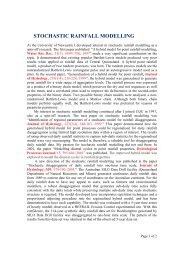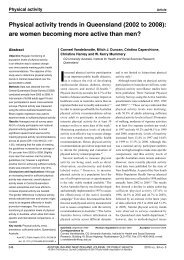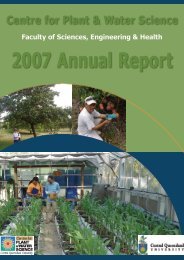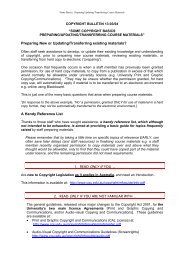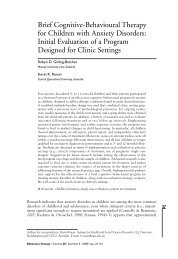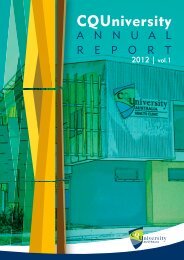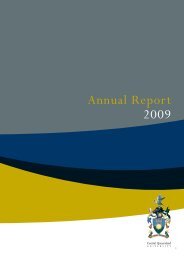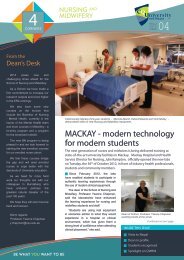Centre for Plant & Water Science - Central Queensland University
Centre for Plant & Water Science - Central Queensland University
Centre for Plant & Water Science - Central Queensland University
You also want an ePaper? Increase the reach of your titles
YUMPU automatically turns print PDFs into web optimized ePapers that Google loves.
<strong>Centre</strong> <strong>for</strong> <strong>Plant</strong> & <strong>Water</strong> <strong>Science</strong> 2008 Annual Report<br />
SCREENING OF TOMATO GERMPLASM FOR DROUGHT<br />
TOLERANCE<br />
SUMMARY<br />
Drought is an important abiotic stresses <strong>for</strong> crop production. With climate change, episodes of<br />
droughts are predicted to be frequent affecting crop yield and quality. Furthermore, pricing <strong>for</strong><br />
water and decreasing allocation entrust pressures on irrigators. With this in mind a project is<br />
underway to screen <strong>for</strong> drought tolerance amongst tomato genotypes.<br />
The extent and duration of both intermittent and terminal drought stress impact on yield and quality<br />
and their effects can be amplified by interactions with high temperature, disease and hostile soil<br />
conditions. Detailed physiological characterisation becomes an important step <strong>for</strong> effective<br />
germplasm screening <strong>for</strong> utilizing such traits in breeding. In this project we aimed to develop<br />
methods <strong>for</strong> tomato drought screening, and link physiological traits with drought tolerance. Eighteen<br />
tomato lines from the world vegetable centre (AVRDC) Taiwan were tested under semi-controlled<br />
environments of the glasshouse or screen house at CPWS CQ<strong>University</strong>, Rockhampton in three trials<br />
(1. Drought pool, 2. Terminal drought, and 3. Deficit irrigation) during the 2007-2008 season.<br />
(a) (b) (c)<br />
Tomato accessions tested in: (a) drought pool experiment, (b) terminal drought, and (c) deficit<br />
irrigation experiments.<br />
Figure 1. Changes in soil water content at different depth in the tomato drought pool and tolerant<br />
accessions were capable of drawing soil water at deeper depths and lower than 15% water content.<br />
Experimental approach 1 – Drought pool<br />
S. pimpinellifollium accessions L3708 and LA1579 showed drought tolerance under declining soil<br />
moisture regimes as measured by number of flower bunch, fruits and biomass yield. These<br />
accessions also consistently showed lower crop water stress index and electrolyte leakage, lower leaf<br />
water potential and greater osmolality, plant height and delayed wilting compared to standard check<br />
Arka Meghali and hybrid check Trifecta.<br />
Experimental approach 2 – Terminal drought<br />
In the terminal drought experiment each accession was planted (15 August 2008) in an individual<br />
cylindrical container (130 L, 60 cm diameter x 85 cm height), in two replications, in a randomised<br />
fashion containing 169 kg of soil at field capacity (Figure 3). Relative ranking of the accessions <strong>for</strong><br />
days to permanent wilting, monitoring of growth, development and physiological response was<br />
43





